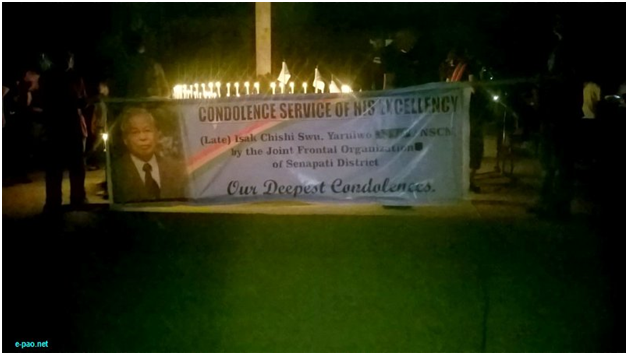Swu Dies, And Does the Naga Accord Die With Him?

NEW DELHI: NSCN(IM) leader Isak Chisi Swu died, and with him perhaps have gone the last vestiges of an accord (later changed to Framework Agreement) that was announced as done by the government 11 months ago, but clearly remains under negotiations. Swu, who was ailing then, was perhaps the only Naga leader with the ability to unite the warring factions, and the credibility to provide the much needed fig leaf for all the other participants in the dialogue, namely his NSCN partner Thuingaleng Muivah and the government at the centre.
The Modi government that announced the Naga accord with a roll of the drums, then quickly redefined this as a Nagar Framework Agreement expected to reach towards the final accord. Swu was unwell at the time, and the rush to ink the deal as it were was a half baked effort to ensure that the accord/agreement had the legitimacy of his approval. Clearly the centre’s interlocutor R.N.Ravi along with the National Security Advisor Ajit Doval were of the view that the two sides would be able to sort out the thorny issues, and under Swu, be able to convince the Naga rebel factions to accept a broad agreement.
This did not happen. And as the days after the grand announcement turned into weeks, the government and the NSCN(I-M) flooded with questions about the details of the agreement lapsed into an embarrassed silence. Till today no one outside the negotiators of both sides have any idea of what the Agreement contains, and whether it has addressed the core concerns that have been at the centre of the Naga agitation sending both Swu and Muivah to exile for long years before lines of communication were opened by intermediaries with the central government, then under the Congress party.
Swu was keen that a peace agreement be reached during his lifetime. But perhaps not keener than Muivah and the government as his death was expected to have an adverse impact on the process. Clearly an agreement, framework or otherwise, is far from closing the gaps between Delhi and Nagaland as otherwise the details would have been shared during the ageing and ailing Naga leaders life. That the government was unable to do so, is an indication that this agreement has been little more than another in a growing list of grand announcements, more hype than substance.
Nagaland Governor PB Acharya has publicly stated that end 2016 would see the settlement of the Naga political issue. However, this according to sources is again rhetoric as by failing to make at least some of the clauses of the agreement public, the government has lost the Swu factor as it were, in influencing the largest Sema Naga community over which he had almost complete hold. That the other Naga factions were not willing to be persuaded to accept the agreement, is clear from the government’s inability to give out the details and thereby silence critics and the opposition that have been continuously raising questions about what is now described as the “non existent” agreement.
Local Nagaland media has reported that even the 60 legislators of the state who came together under the Nagaland Legislators Forum banner had no idea of the peace process, and headway, if any made. A 19 member Parliamentary Working Committee (PWC) of Nagaland under the banner of the NLF met Prime Minister Narendra Modi, Home Minister Rajnath Singh and others to urge them not to try and effect a “piecemeal” solution to the Naga problem as this would create more violence, than peace.
went to Delhi in the middle of July 2015 and met Modi, Home Minister Rajnath Singh, Union Minister for Home Kiren Rijiju and Ravi. They urged Modi not to attempt with any kind of piecemeal solution to the longstanding Naga political issue as past piecemeal solutions had only spawned more bloodshed rather than ending the issue.
The divisions within the factions in Nagaland have continued through these negotiations. And as sources pointed out, if they could agree under Swu it is going to be very difficult for them to agree to the basic framework, let alone the final accord now. Muivah is seen as an outsider, and not part of the Naga loop as it were.
The government is looking for a replacement in Swu and as the sources said, a great deal will depend on who succeeds him. And even as this is said, the sources add that Swu was irreplaceable and no one will have the same clout to move the factions into united support. A possible name being mentioned in Nagaland is Khole Konyak, who was President of the GPRN/NSCN, and joined the NSCN (I-M) a few months ago. He became the Vice President of NSCN(I-M) in could be an orchestrated move to replace Swu in the talks, although perhaps not as the Chairperson of the organisation.



